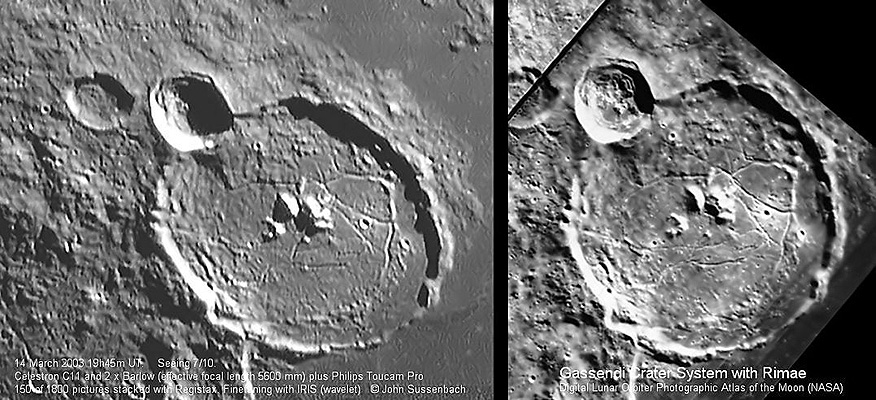Difference between revisions of "June 3, 2015"
(Created page with "__NOTOC__ =Gassendi= Originally published June 2, 2004 <!-- Start of content --> <table width="640" border="0" align="center" cellpadding="4" cellspacing="2"> <tr> </tr> </ta...") |
|||
| Line 14: | Line 14: | ||
</tr> | </tr> | ||
</table> | </table> | ||
| + | <p class="main_sm" align="center">Image Credit: [mailto:john@jsussenbach.nl John Sussenbach] and [http://www.lpi.usra.edu/research/lunar_orbiter/ NASA Lunar Orbiter IV]</p> | ||
<table class="story" border="0" bgcolor="#FFFFFF" width="90%" cellpadding="10" align="center"> | <table class="story" border="0" bgcolor="#FFFFFF" width="90%" cellpadding="10" align="center"> | ||
<tr> | <tr> | ||
Latest revision as of 10:17, 6 June 2015
Gassendi
Originally published June 2, 2004
Image Credit: John Sussenbach and NASA Lunar Orbiter IV
Gassendi The advent of webcams and image compositing and enhancing software has given amateur astronomers with modest size instruments the ability to acquire lunar images that equal or surpass the very best professional images. Now amateurs are pushing up against the resolution of space craft imaging. In this comparison of the lunar crater Gassendi, Dutch astroimager John Sussenbach notes that his image has a resolution of about 0.3 seconds of arc, which is both better than theoretical for an 11" and comparable with the Lunar Orbiter image. Gassendi (diameter 110 km) is another floor-fractured crater, like Posidonius and Petavius. The crater has been shallowed by floor uplift and lava flooding. Originally posted January 15, 2004 Related Links: Yesterday's LPOD: Posidonius: Rilles and Uplift Tomorrow's LPOD: Lunar Ring |
Author & Editor:
Charles A. Wood
COMMENTS?
Register, Log in, and join in the comments.




